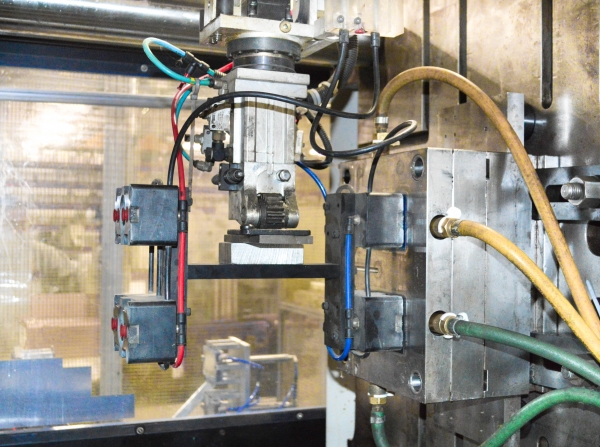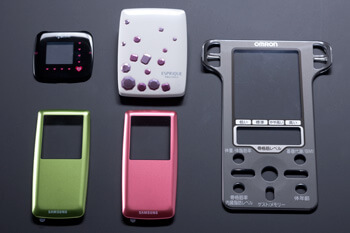In-Mold Decorations: Elevating Products With Accuracy and Visual Appeals
In the realm of product design, the marriage of accuracy and aesthetics holds a critical position in capturing consumer focus and commitment. In-Mold Decorations (IMD) have actually arised as an advanced method that not only elevates the aesthetic allure of items however also guarantees a meticulous integration of layout components. The combination of innovation and creativity in IMD opens a realm of opportunities for suppliers looking for to distinguish their offerings in an open market landscape (In-Mold Decorations). As we discover the world of IMD, a world where accuracy fulfills creative thinking, a much deeper understanding of the transformative effect on items awaits.
Advantages of In-Mold Decorations
This innovative method includes putting a pre-printed film or label into the mold and mildew before infusing the molten plastic, resulting in an irreversible blend of the decor with the item. The benefits of in-mold decorations are manifold, starting with the ability to achieve high-resolution graphics and comprehensive styles that improve the visual charm of the final product.
In addition to improving aesthetics, in-mold decorations also enhance the resilience and longevity of the design as it becomes an essential part of the item, instead than a surface layer that can diminish gradually. Moreover, the smooth combination of decorations through in-mold techniques makes certain a consistent and constant appearance across all made products, maintaining brand uniformity and high quality standards. Overall, the advantages of in-mold designs make it a preferred selection for makers looking to boost their products with accuracy and aesthetic allure
Precision in Design Combination
Achieving careful style assimilation through in-mold designs needs an eager concentrate on precision and focus to detail from the first stages of the production process. The success of in-mold decors depends upon the smooth integration of the layout with the product, producing a harmonious and visually appealing end outcome. Precision in layout integration includes factors such as making sure the exact placement of the design within the mold and mildew, choosing the appropriate materials to accomplish the wanted visual, and preserving uniformity throughout the manufacturing process.
One trick facet of accuracy in layout assimilation is the placement of the decor with the item's functions and shapes. In addition, focus to information is critical in keeping the top quality and uniformity of the designs throughout several production runs, guaranteeing that each product meets the highest possible criteria of accuracy and aesthetic appeal.
Visual Appeals and Visual Influence
With an emphasis on improving the general appeal of items, the appearances and aesthetic effect of in-mold decorations play a crucial duty in fascinating consumer focus. In today's open market, where consumers are flooded with options, the visual allure of an item can be the distinguishing factor that affects acquiring decisions. In-mold decorations supply a special opportunity to boost the looks of products by giving complex designs, lively colors, and smooth coatings that conventional designing techniques might have a hard time to achieve.
The aesthetic impact of in-mold designs extends beyond mere looks; it communicates brand name focus, identity, and high quality to information. By incorporating aesthetically enticing elements into item layout, producers can develop a strong brand name visibility that resonates with customers on a subconscious degree. Additionally, the accuracy and consistency used by in-mold decoration methods make certain that every product satisfies the highest possible standards of aesthetic allure, reinforcing brand reputation and customer count on.
Cost-Effectiveness of IMD

IMD minimizes the demand for second procedures like paint or labeling, conserving both time and sources. By incorporating the decor straight into the molding procedure, IMD gets rid of the extra steps required for applying decorations post-production. This streamlined process not only reduces labor costs but additionally minimizes the threat of mistakes or issues that might develop throughout additional embellishing processes.
Additionally, IMD enhances the resilience of decorations by encapsulating them within the product, guaranteeing a longer-lasting and more resistant coating - In-Mold Decorations. This toughness converts right into lowered maintenance and substitute expenses over the product's lifecycle, making IMD a cost-effective solution for attaining remarkable looks and visual appeal in production
Longevity and Durability
Incorporating in-mold decors not only ensures cost-effectiveness in making processes yet likewise significantly improves product toughness and longevity. The procedure of in-mold decoration entails the application of graphics or attractive surfaces throughout the molding process, developing a seamless and incorporated design that is secured within the item itself. This protective layer given by in-mold decorations offers as a shield against damage, scratches, fading, and various other ecological elements that can compromise the look and longevity of the product gradually.
Products with in-mold decorations are understood for their resistance to abrasion, chemicals, and UV direct exposure, making them perfect for applications that need lasting performance and looks. Unlike traditional surface-applied designs that can remove or discolor with use, in-mold decorations end up being an inherent component of the product, guaranteeing that the style continues to be vivid and intact throughout the item's lifespan. This resilience not just improves the total find more info top quality of the product but also decreases the requirement for constant upkeep or substitutes, inevitably providing long-term cost savings for customers and makers alike.
Conclusion

The advantages of in-mold designs are manifold, beginning with the capability to accomplish high-resolution graphics and in-depth styles that improve the visual charm of the final product.In addition to boosting aesthetics, in-mold decorations additionally boost the longevity and long life of the style as it ends up being an important part of the product, instead than a surface layer that can use off over time. In-mold decors website here use a special chance to elevate the visual appeals of products by giving complex styles, dynamic shades, and smooth surfaces that traditional designing techniques may battle to attain.
The process of in-mold decoration entails the application of graphics or see post ornamental finishes throughout the molding process, creating a smooth and integrated design that is shielded within the product itself. Unlike traditional surface-applied decors that can peel off or fade with usage, in-mold designs become an innate part of the item, ensuring that the layout remains dazzling and intact throughout the item's life-span.